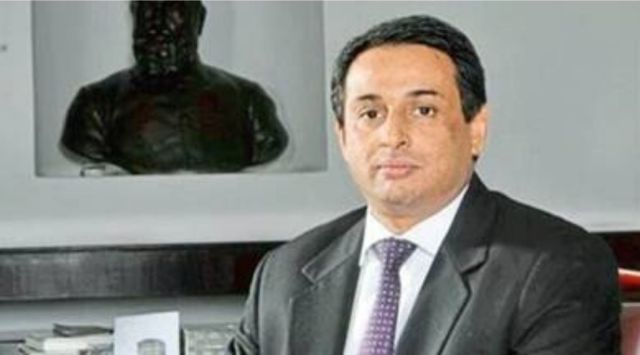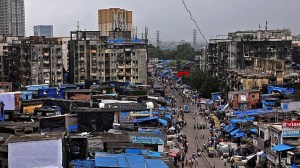The industry cannot have “unfair expectations” in terms of the interest rate cycle as central banks across the world are now tightening monetary policies, CII president and Tata Steel CEO & MD TV Narendran said. In an interview with Pranav Mukul and Aanchal Magazine, speaking about the impact of the pandemic on the MSME sector, he exhorted that ‘one size fits all’ may not work on getting some sectors back on track. Edited excerpts:

The sentiment is still quite positive when we talk to our members. The increase in interest rates were in some sense inevitable given the inflationary pressures and we feel the RBI has been very accommodative over the last few quarters. So we cannot have unfair expectations, central banks across the world are taking these calls. As far as input cost pressures are concerned, there is some concern about some margin pressures while the demand continues to be strong. But whether the margins will get impacted, how much of the impact of the input costs can be passed on to the customers without hurting demand – these are some of the questions our members are dealing with. But overall when we have spoken to them, the sentiment is positive, people expecting to continue to spend more on capex than they did in the previous years. So, there is obviously some concern about the turbulence but nothing has been derailed so far.
CII surveys have shown most companies are operating at nearly 70-80 per cent of the capacity. Would this translate into some capex by the companies, and can interest rate hikes potentially impact this?
One of the biggest areas where private sector investment is being announced is metals, then mining. There the motivation to invest has gone even more because the demand is strong, the profitability is strong, balance sheets have been de-leveraged, so you can grow without taking on too much of debt. So I don’t see any change there. In fact, if at all people will try to accelerate the investments and grow faster. Because there is an export opportunity also to Indian producers of metals. The second area which was strong was chemicals and specialty chemicals which again has had a good year of exports, again there are opportunities and we see that is also likely to be strong. Third area is driven by the PLI scheme and the potential demand in India is electronics manufacturing. We will continue to see investments come in there and in fact, India can transition from being a big importer of electronics to a big exporter. The fourth area where we have seen the private sector coming in a big way is supply chains, warehousing etc and that also is very strong because of the growth in the e-commerce sector and money continues to be invested in that sector and everybody is expanding beyond the larger cities into the interiors of the country. Overall, the private sector investment being crowded in because of the government’s investment in infrastructure, I think that narrative continues.
While a tightened monetary policy may have an impact on inflation, there seem to be more structural issues. Do you think that interest rate hike alone would be enough?
The inflationary impact is of multiple reasons. Lot of it is to do with the recovery post pandemic globally being faster than most people thought and supply chains not prepared for that. So you had shortages on semiconductors, containers, multiple bottlenecks, which were exposed which led to higher costs. Similarly, geopolitical events also had an impact if you look at China and Australia had a problem before that. Now with the Ukraine problem, for instance, the coking coal prices are very dependent on the geopolitical issues. So it was up or down depending on that. That’s big input cost for steel sector. Some of these are structural but not necessarily permanent. They are structural but will go away as things settle and the RBI has been taking a view and that’s why it has not been increasing interest rates because they felt that some of these have less to do with local issues and more to do with temporary global issues. But having said that, as inflation has gone up and India is also very vulnerable to oil prices, RBI is taking a view and like all central banks, they cannot sit by if inflation is higher than what they are comfortable with. So that’s an action that they will take.
Story continues below this ad
There are many sectors which were impacted worse than the others. MSME sector is one, but even within MSMEs, it’s not everyone. If you really look at India’s strong exports, a lot of exports happens through MSMEs. Many MSMEs have also done well but there are many who have struggled. So you need to have a sector-specific approach rather than a MSME approach in general because not all of them are doing badly. Our own admission to the government has been that for some of these sectors, you have a very focused approach. Some things like ECLGS have helped, but even beyond that we need to see how we can help some of these sectors, which are more impacted and get them back on track. So it’s not a one-size fits all approach. Monetary policy is important, they need to do what they need to do, but not all of the inflation is because of the fact that on the supply-side, it has seen disruption and many people have gone out. The supply-side impact is more geopolitical and global than local and MSME sector will certainly need some support.
You mentioned thermal power, coking coal prices get affected due to geopolitical conflict. The focus is now more on renewables, where capital intensity is lower. How do you see that getting impacted?
While the renewables will continue to grow, they will not fully solve the problem, at least for quite some time. While a 400 GW target for 2030 is very aggressive and ambitious to be chased and achieved but India’s power needs will be much more than that. Second issue which renewables doesn’t address is storage because a lot of industry, process industry needs to run 24×7. So renewables plus storage is what lot of process industry will look for. Otherwise renewables can be part of the mix but it cannot substitute the continuous supply you need. We are some years away from all that. While we may reduce our dependence on coal, it will continue to be an important part of our economy going forward, whether it is coking coal or thermal coal. Coking coal is even more complex challenge that is required in steelmaking and that can only be substituted when you have lot of hydrogen available in plenty and cheap. Otherwise we will still continue to import coking coal and that’s where the trade deal with Australia was important for instance. So the cost of bringing in coking coal into India will have come down now because of the trade deal. But again it is at least 15-20 years away from the solution which is hydrogen for instance. That’s why these sectors will continue to play an important role and for the world and for India, transitioning into a greener future is a very complex transition. We can plan it well so that we don’t do it in a manner which is disruptive for the society and the industry and do in a smooth manner.
What are the investment opportunities that you see arising out of the FTA with Australia and also the pacts being negotiated with the EU/UK?
Story continues below this ad
Australia and India complement each other in many ways, we don’t compete with each other…more specifically, for India there are lot of opportunities, one, Australia imports pretty much all its pharmaceuticals and India is a very small share of that, so great opportunity to grow that. Indian exporters of leather and textiles have been disadvantaged that competing countries have a trade deal with Australia and had lower duties etc. so this creates a very level playing field. India is already the second largest producer of steel and is continuing to grow and Australia is a big supplier of coking coal. So that’s an opportunity from Australia for India. There was also discussion around medical tourism…the other areas where bonds are growing is education. There are multiple areas where trade can grow. EU, the UK and the US account for 40 per cent of our exports already, so one question is how to increase that share. But on a larger basis, beyond these markets we should also look at new markets and Australia is one good example. We should also look at Africa, Latin America, Asia even China to see how we can build our market.
































